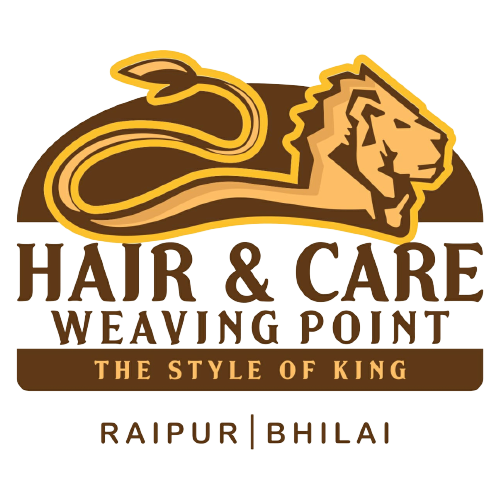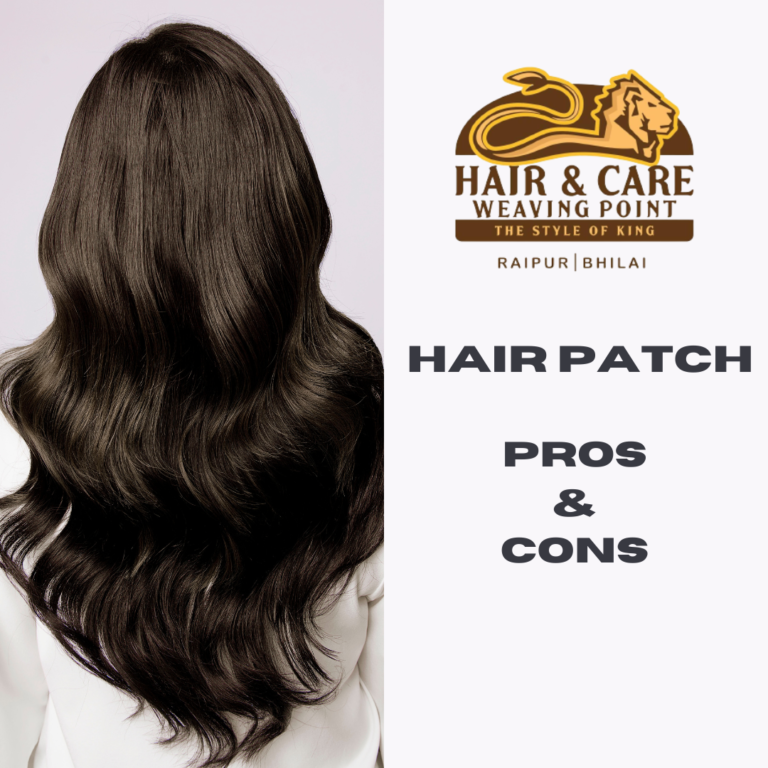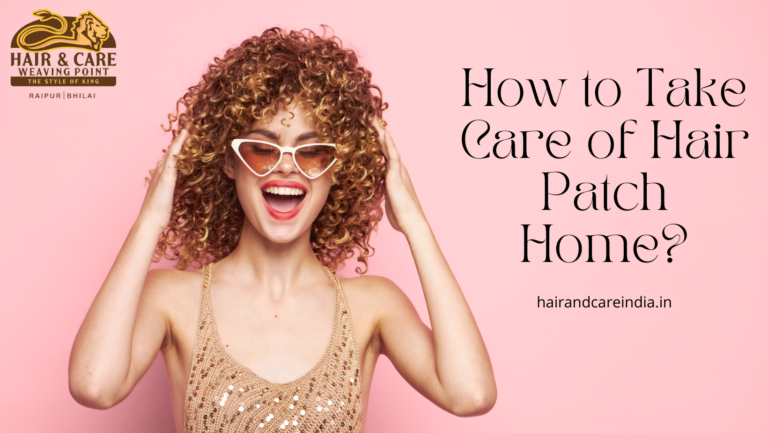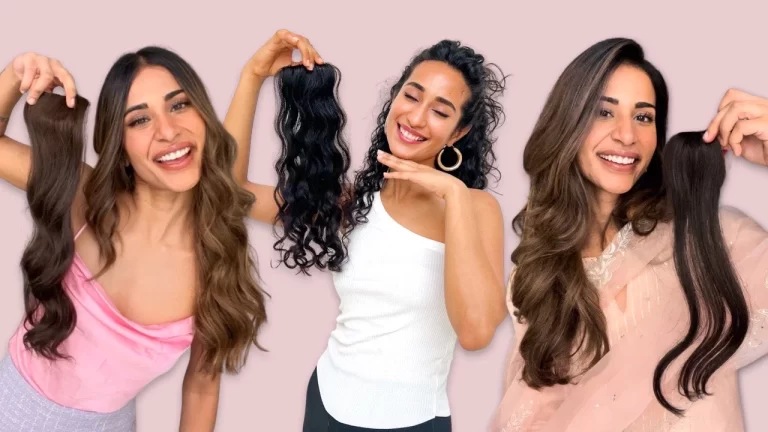Welcome to Hair and Care Weaving Point | Free Shipping And COD On All Orders
Choosing the Right Hair Extension Method: A Guide to Hair Bonding and Hair Weaving
Are you all set to take your hair game to the next level? If you want to add volume, length, or colour to your locks, hair extensions are what you need. But with so many methods and techniques available, it can be overwhelming to know where to start. That’s why we’re here to help.
In this article, we’ll explore the differences between two popular extension methods – hair bonding and hair weaving – so you can decide which one is right for you. So, grab a coffee cup & get ready to learn everything you need to know about these two techniques.

Hair Bonding
Hair bonding is a hair extension method that uses an adhesive to attach synthetic or human hair to natural hair. The hair extensions are bonded to the natural hair using glue or adhesive tape. Hair bonding is a temporary solution and can last anywhere from a few days to a few months, depending on how well the bonding glue or adhesive tape holds up. The process is painless and takes about 2-3 hours to complete.
Pros of Hair Bonding
- Hair bonding is a quick and painless process requiring no surgery or incisions.
- It is an affordable solution for people who want to try out different hairstyles without committing to a permanent change.
- It allows you to add volume and length to your hair, making it ideal for people with thin or short hair.
- Hair bonding is a non-invasive method that does not damage the natural hair.
Cons of Hair Bonding
- The bonding glue or adhesive tape used in hair bonding can cause allergic reactions or scalp irritation in some people.
- The hair extensions may come loose if the bonding glue or adhesive tape is not applied correctly.
- Hair bonding is not a long-term solution and may need to be redone frequently.
Hair Weaving
Hair weaving, or hair integration or meshing, combines synthetic or human hair into a natural braid or cornrow. The hair extensions are sewn or woven into the braids using a needle and thread. The process can take 2-6 hours to complete and lasts several months.
Pros of Hair Weaving
- Hair weaving is a long-term solution lasting several months, making it ideal for people who want a more permanent change.
- It is a safe and non-invasive method that does not require any surgery or incisions.
- Hair weaving allows you to add volume and length to your hair without damaging the natural hair.
- The hair extensions are sewn or woven into the natural hair, making it a secure and durable method.
Cons of Hair Weaving
- Hair weaving can be more expensive than hair bonding.
- The braids used in hair weaving can be uncomfortable and may cause scalp irritation.
- Hair weaving requires maintenance, and the hair extensions may need to be re-tightened or repositioned periodically.
- Weaving hair extensions can take several hours and may require multiple sessions.
Differences between Hair Bonding and Hair Weaving
Hair bonding and weaving are two popular methods for adding length, volume, and thickness to natural hair. While they both obey the same purpose, they differ in several aspects, such as the application process, durability, maintenance, and cost.
Application Process
Hair bonding involves attaching wefts of hair to the natural hair using adhesives. The stylist applies bonding glue or tape to the weft and then attaches it to the natural hair close to the scalp.
On the other hand, hair weaving involves sewing wefts of hair onto a braided base created by sectioning the natural hair. The stylist creates tiny braids or cornrows close to the scalp and then sews hair wefts onto the braids.
Durability
Hair bonding is a temporary method of adding extensions to the hair, and the duration of the extensions depends on the adhesive used and the maintenance routine. Hair bonding extensions can last for a few weeks to a few months.
On the other hand, hair weaving is a more durable and long-lasting method that can last several months or even up to a year with proper maintenance.
Maintenance
Hair bonding requires regular maintenance to prevent the extensions from falling out. The bonding glue or tape may lose its adhesive properties over time, causing the extensions to become loose. The wearer must avoid certain activities that may pull or tug on the extensions, such as swimming, sports, or vigorous brushing.
Hair weaving requires less maintenance, but the braids or cornrows used as a base may need to be tightened regularly to prevent the extensions from slipping.
Comfort
Hair bonding is a non-invasive method that doesn’t involve braids or cornrows, making it more comfortable to wear. The extensions are attached to the natural hair using adhesive, which doesn’t cause tension or pull on the scalp.
On the other hand, hair weaving involves creating a braided base that can be uncomfortable and itchy. The wearer may experience tension or pull on the scalp, leading to discomfort or headaches.
Cost
Hair bonding extensions can be applied quickly and easily, making them a popular choice for people on a budget. Hair bonding is relatively affordable compared to hair weaving, which is more time-consuming and expensive.
Hair weaving requires more time and effort, and the cost may vary depending on the stylist’s experience and the hair extensions’ quality.
Hair Type
Hair bonding suits people with fine or thin hair who want to add volume or length temporarily. The adhesive used in hair bonding can damage or break natural hair, so it’s not recommended for people with already damaged or fragile hair.
On the other hand, hair weaving is suitable for people with coarse or thick hair who want to add length or volume for an extended period. The braided base used in hair weaving can support the weight of the extensions without causing damage or breakage to natural hair.
Conclusion
Hair bonding and hair weaving are both effective hair extension methods that can help you achieve your desired hairstyle. However, they differ in method, durability, cost, comfort, and maintenance. Hair bonding is a quick and affordable solution for people wanting to try different hairstyles without committing to a permanent change. On the other hand, hair weaving is a more expensive but long-term solution that can last several months.
Hair and Care Weaving Point is a well-known and trusted name in the hair industry, specialising in various hair extension methods, including hair weaving and bonding. They use high-quality materials and follow strict hygiene and safety protocols to ensure their clients receive the best results. Additionally, their stylists are knowledgeable and skilled in creating customised extensions that match your natural hair colour, texture, and style.



